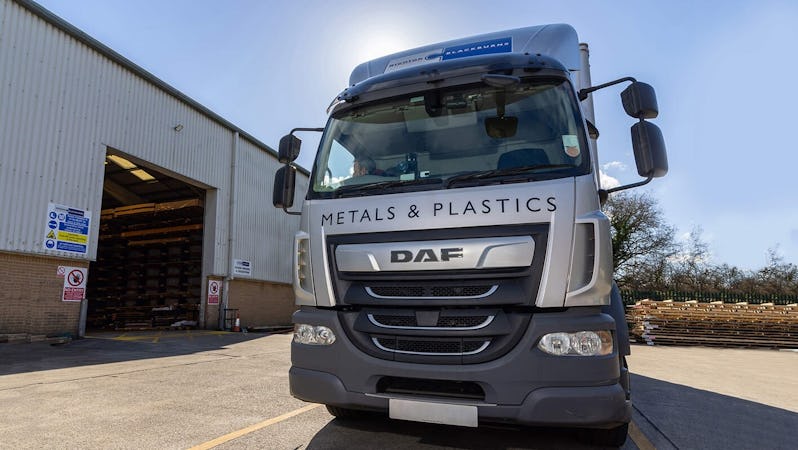General Cleaning Methods
Stainless steel is easy to clean. Washing with soap or a mild detergent and warm water, followed by a clear water rinse, is usually quite adequate for domestic and architectural equipment. An enhanced aesthetic appearance will be achieved if the cleaned surface is wiped dry.
Where stainless steel has become extremely dirty with signs of surface discolouration, (perhaps following a period of neglect or misuse), methods of cleaning are detailed in the chart.
Maintaining Stainless Steel
Provided care is taken during fabrication and installation, final cleaning before handing over to the client should present no special problems, although more attention than normal may be required if the installation period has been prolonged. Where surface contamination is suspected, immediate attention to cleaning after on-site fixing will encourage a trouble- free product life. Food handling, pharmaceutical, aerospace and certain nuclear applications require extremely high levels of cleanliness.
Advice is often sought concerning the frequency of cleaning stainless steel and the answer is quite simple: “Clean the metal when it is dirty in order to restore its original appearance”. This may vary from one to four times a year for external applications or it may be once a day for items in hygienic or aggressive situations. Frequency and cost of cleaning is lower with stainless steel than with any other materials and will often outweigh the initial higher cost of this superior product.
Specialist Cleaning
Buildings
Careful planning is necessary to achieve and maintain the desired surface appearance on external parts of the buildings. The choice of cleaning process is influenced mainly by the contaminant to be removed, the required degree of cleanliness and the cost of the operation. The smooth surface of stainless steel does not encourage dirt deposits and there is little danger of superficial corrosion roughening the metal surface.
External
Rain plays an important part in the washing-down of a building. Sheltered areas will collect dirt which, if not washed away periodically, could lead to deterioration of appearance or corrosion. In highly industrialised or coastal areas more frequent cleaning may be required than in rural areas or where clean air regulations apply. To remove normal atmospheric dirt, sponging down with water containing soap, detergent or ammonia, followed by rinsing with clear water and wiping dry, is generally sufficient.
Domestic, Institutional and Catering Equipment
In general, cleaning is carried out to restore the original surface appearance, prevent corrosion and maintain hygienic conditions. Stainless steel is easy to clean and washing with soap or a mild detergent and warm water, followed by a clear water rinse, is usually quite adequate for domestic, architectural and commercial catering equipment. If the water is hard, the steel should then be dried with a soft cloth to prevent water spotting.
Hygiene
Thorough cleaning is particularly important in catering and medical applications where cleanliness is required not only for aesthetic purposes but also for hygiene. Stainless steel’s smooth and pore-free surface does not harbour bacteria and is easily cleaned, if necessary using the most vigorous techniques. Studies on cleanability have shown stainless steel, if polished correctly performs similarly to glass and china and markedly better than plastics and other metals tested.
Catering Equipment
When the steel has become extremely dirty, perhaps following periods of neglect or after being subjected to a particularly aggressive environment, mild abrasion only (such as scrubbing with a nylon or other non- scratching scourer) may be necessary. Ordinary steel wool soap pads should never be used as they may leave particles of mild steel on the surface of the stainless steel, which may cause localised areas of rusting. Stainless steel soap pads, are quite suitable.
A bright annealed or 2B finish will be permanently marked by the use of abrasives which, therefore, should be avoided at all costs. Discolouration, heavy dirty or rust which may resist normal cleaning methods can be removed using a proprietary stainless steel cleaner followed by a clear water rinse. Some deposits and stains encountered in catering and medical applications can be difficult to remove.
It should be noted that nearly all abrasive cleaners will scratch a bright annealed or 2B finish of stainless steel. On other finishes the cleaner should be used in the direction of the polish. A clean dust and grit-free cloth should be used to avoid scratching. In all cases the mildest cleaning procedure that will do the job efficiently should be used.
Notes for designers
Today more and more designers, fabricators and end- users are realising that the total cost of equipment over the required period of service can be more important than initial cost. Charges for maintenance, repair and replacement of inferior quality materials within that life period will often outweigh a higher initial capital cost associated with more durable materials. It is, thus important to select the correct finish at the outset.
Stainless steels offer long life and require far less cleaning and maintenance than most constructional methods. Provided the grade of stainless steel appropriate for the service environment is selected, it has been polished correctly and cleaning schedules are carried out on a regular basis, good performance and long service life are assured. Surface finish also plays an important role, not only for appearance but also for ease of maintenance.





